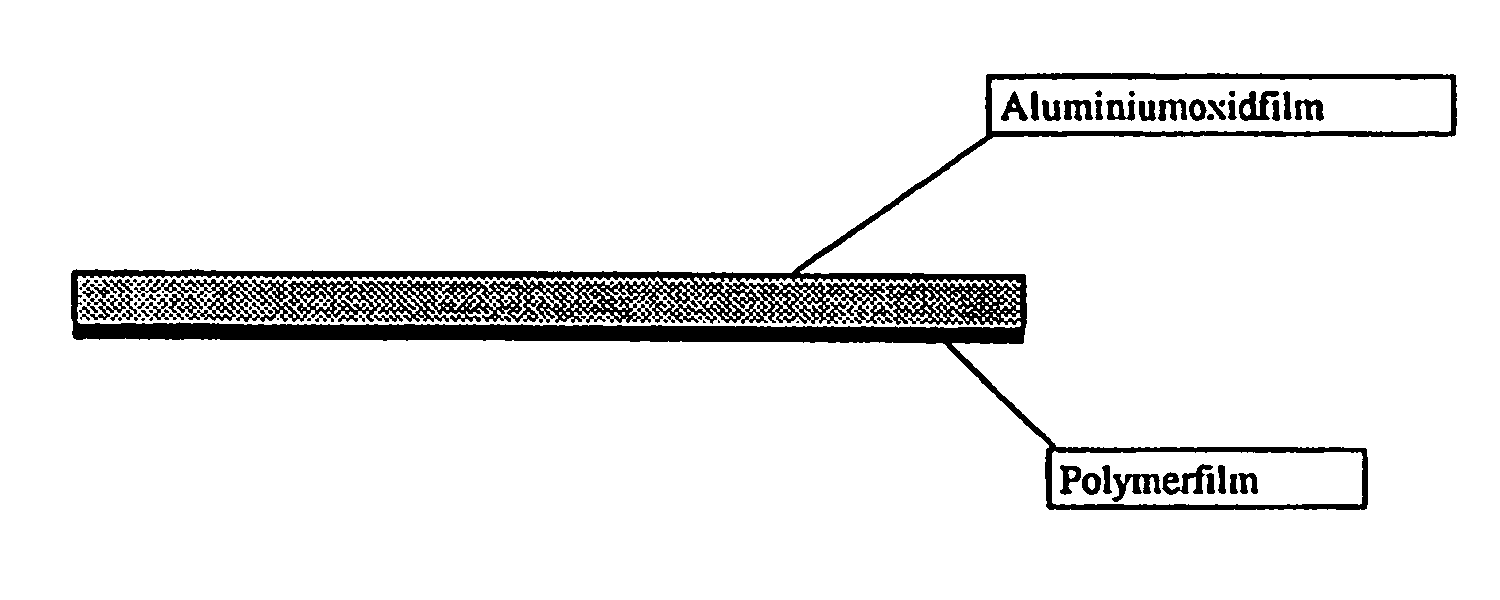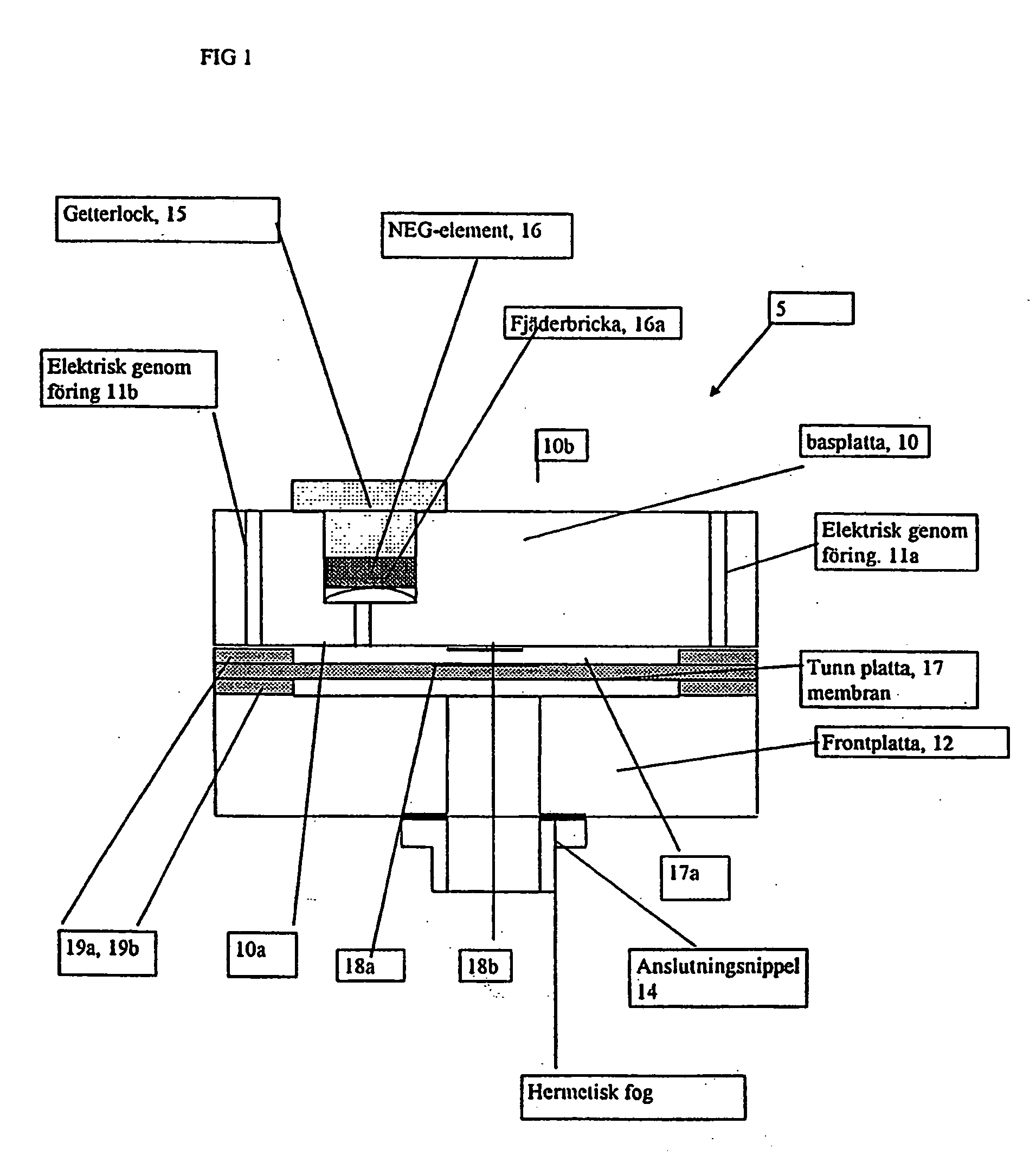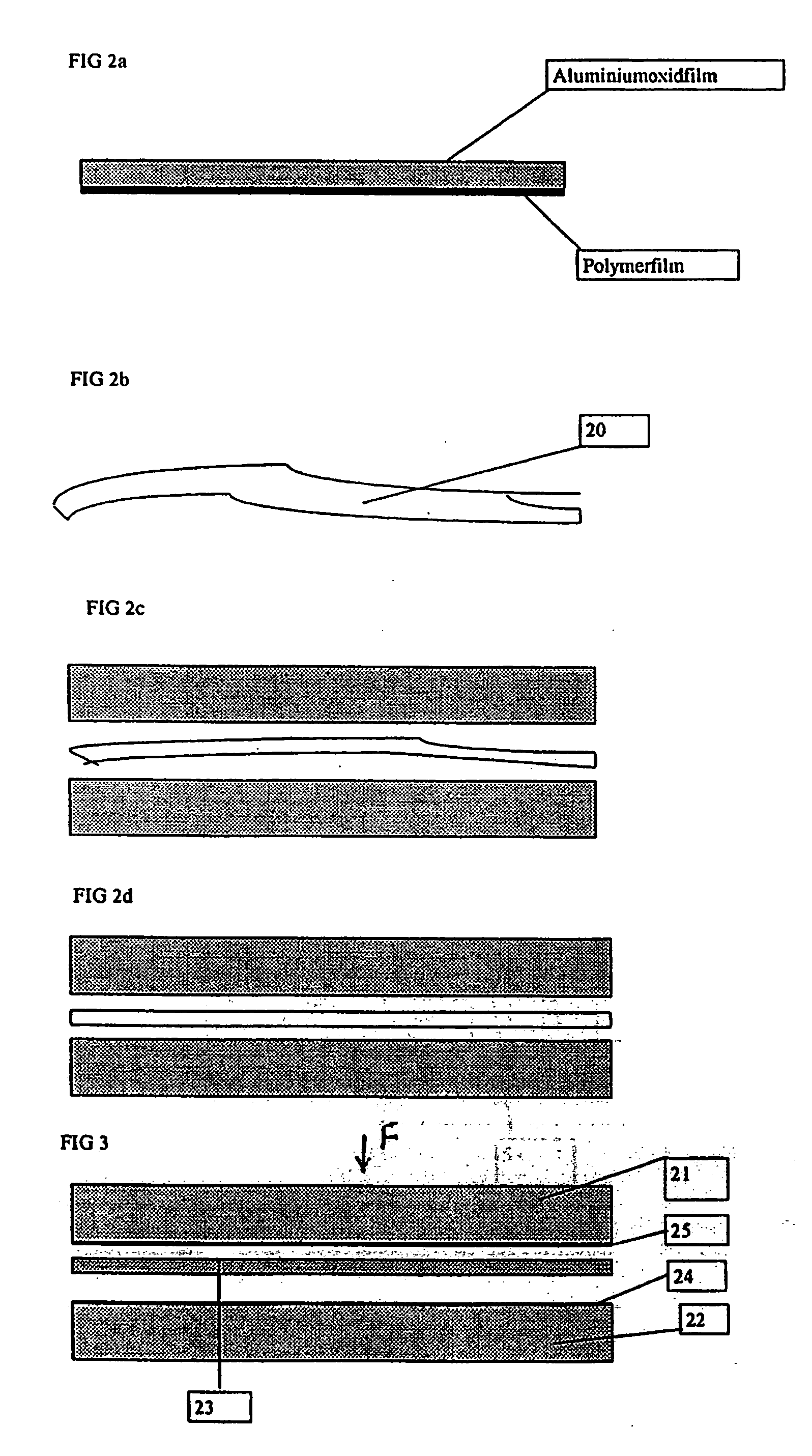Method for producing a pressure sensor for detecting small pressure differences and low pressures
- Summary
- Abstract
- Description
- Claims
- Application Information
AI Technical Summary
Benefits of technology
Problems solved by technology
Method used
Image
Examples
Embodiment Construction
[0034] Sensor elements of the absolute type, i.e., for measuring absolute pressures, according to Case A as defined above consist of three ceramic circular plates. In FIG. 1 such a sensor element 5 is shown, which is built of a base plate 10, a front plate 12 and a circular ceramic plate 17, also called a diaphragm, which is movable with the difference of the gas pressures acting on its large surfaces. The diaphragm is extremely thin in relation to its diameter and is located between the base plate and the front plate. In the base plate 10, two circular through-holes 11a and 11b are provided for letting electrical conductors through. On the under side 10a of the base plate 10 an electrically conducting thin film 18b of preferably gold is provided, which is made by means of thin film methods, the free, under surface of this thin film 18b constituting one of two opposite electrically conductive areas which form the measurement capacitor of the sensor element. On the top surface 17a of...
PUM
 Login to View More
Login to View More Abstract
Description
Claims
Application Information
 Login to View More
Login to View More - R&D
- Intellectual Property
- Life Sciences
- Materials
- Tech Scout
- Unparalleled Data Quality
- Higher Quality Content
- 60% Fewer Hallucinations
Browse by: Latest US Patents, China's latest patents, Technical Efficacy Thesaurus, Application Domain, Technology Topic, Popular Technical Reports.
© 2025 PatSnap. All rights reserved.Legal|Privacy policy|Modern Slavery Act Transparency Statement|Sitemap|About US| Contact US: help@patsnap.com



